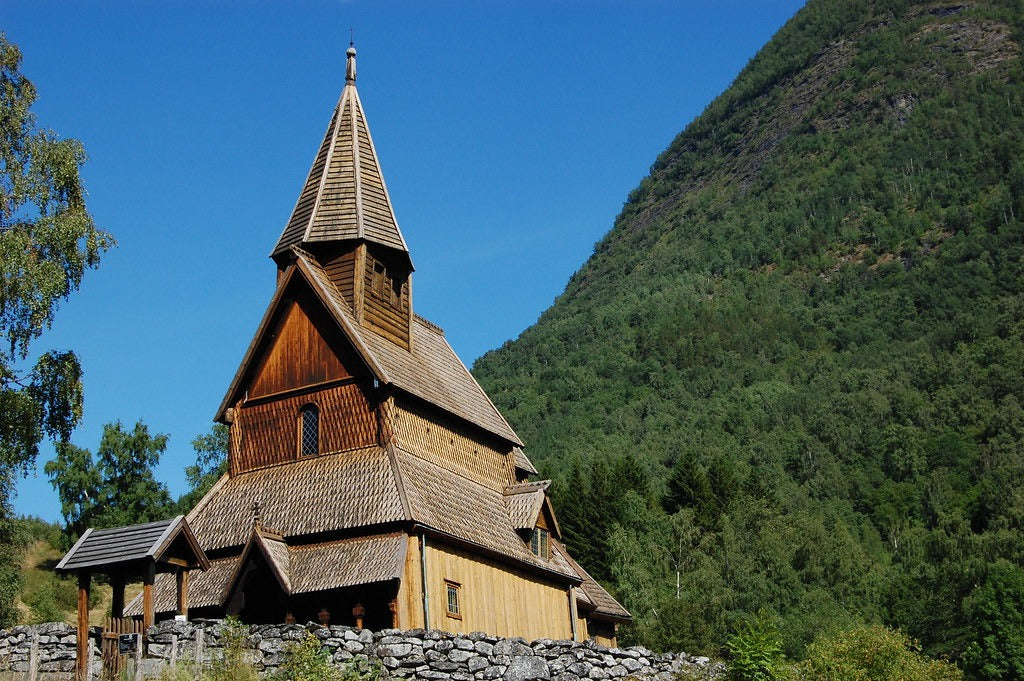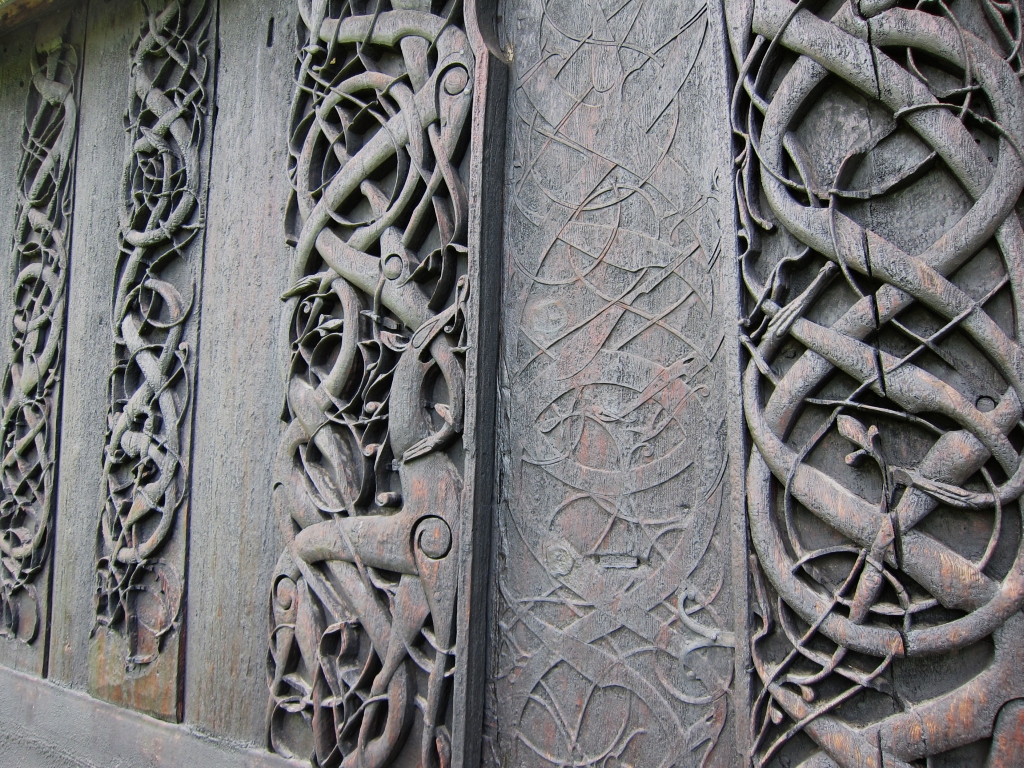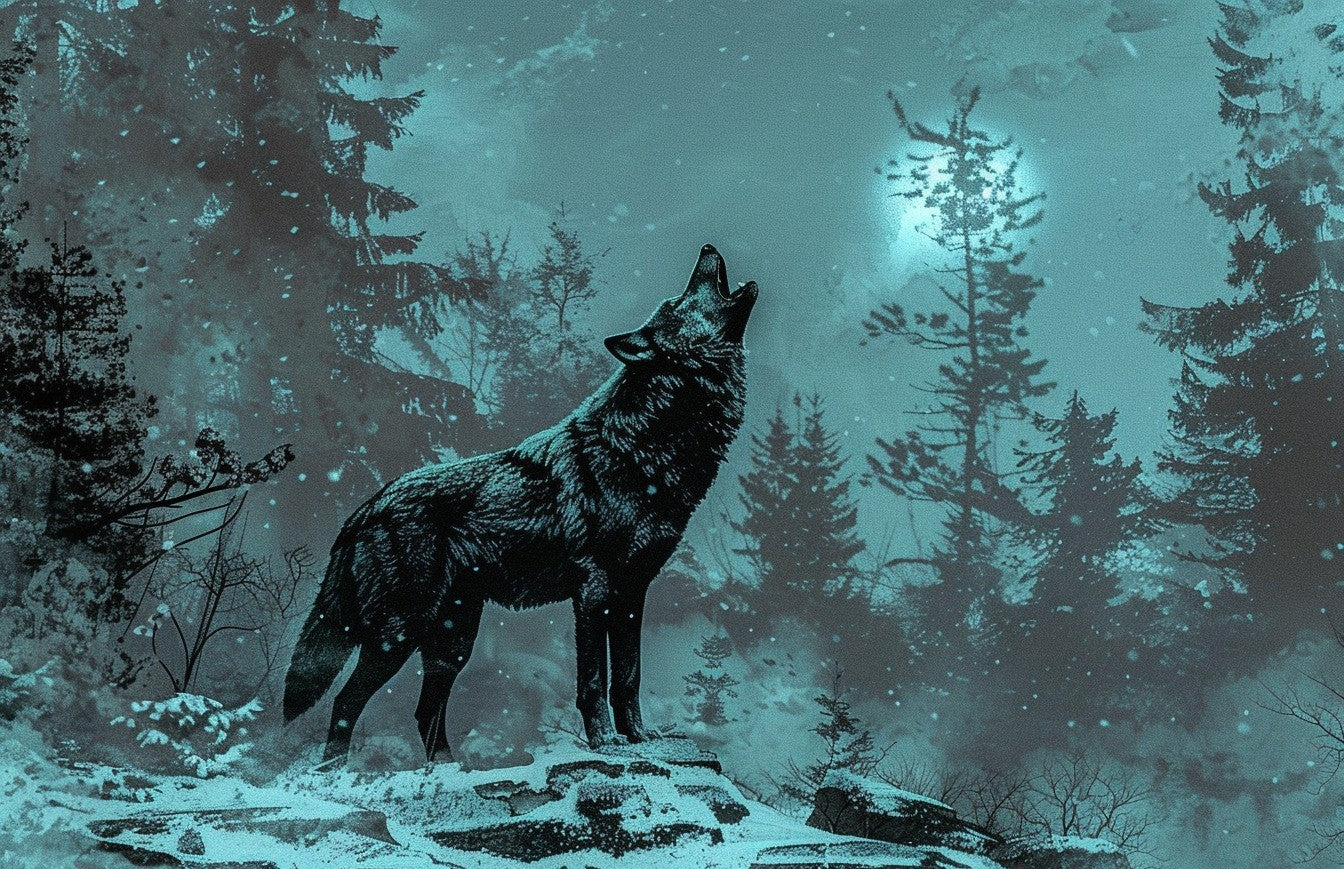
Urnes Stave Church: Where Pagan Art Meets Christian Faith
In the heart of Norway's Sognefjord, where mist-shrouded mountains plunge into deep, dark waters, stands a silent sentinel to history. The Urnes Stave Church, its weathered wood the color of storm clouds, has watched over this fjord for nearly a millennium. Its intricate carvings and soaring spires whisper tales of a time when the old gods of the Norse gave way to the new God of Christianity, a transition as complex and beautiful as the very structure itself.
The Origins of Stave Churches

Wooden model of the Staves Church
The Viking Age and Christian Conversion
To understand the Urnes Stave Church, we must first cast our minds back to the tumultuous days of the Viking Age. Picture, if you will, longships with dragon prows cutting through the icy waters of the North Sea, their decks crowded with fierce warriors. These were the Norse, whose gods were as wild and untamed as the lands they called home.
But change was coming, carried on the winds from the south. Christianity, with its promise of salvation and eternal life, began to take root in the frozen soil of Scandinavia. It was a time of great upheaval, a clash of cultures and beliefs that would reshape the very fabric of Norse society.
The Birth of a Unique Architectural Style
Out of this crucible of change arose something truly remarkable - the stave church. These wooden marvels, with their multiple tiers and intricate carvings, were unlike anything seen before in European architecture. They were a bridge between two worlds, incorporating elements of traditional Norse building techniques and symbolism with the new requirements of Christian worship.
The stave churches were more than just places of worship; they were a statement, a declaration of faith and craftsmanship etched in wood and set against the dramatic backdrop of the Norwegian landscape. And among these unique structures, the Urnes Stave Church would come to stand as the crowning achievement.
The Urnes Stave Church: A Historical Overview

The Founding of Urnes
The exact date of the Urnes Stave Church's construction is lost to the mists of time, but most scholars agree it was likely built around 1130 AD. Can you imagine the scene? Norse craftsmen, their hands calloused and strong, working tirelessly under the watchful gaze of the fjord. The air would have been filled with the sound of axes biting into wood, the creak of ropes as massive timbers were raised into place.
The church was built on the site of an older church, possibly dating back to the 11th century. In those early days of Christianity in Norway, it was common to build new churches on sites already considered sacred, a practice that helped ease the transition from the old ways to the new.
Centuries of Survival
Weathering the Tests of Time
Over the centuries, the Urnes Stave Church has stood firm against the ravages of time and nature. Imagine the countless storms it has weathered, the harsh winters it has endured. The church has seen empires rise and fall, has watched as the world around it changed beyond recognition.
Yet through it all, the Urnes Stave Church has remained, a constant in an ever-changing world. Its survival is a testament not only to the skill of its original builders but also to the dedication of generations of caretakers who have worked tirelessly to preserve this unique piece of history.
Architectural Marvels of the Urnes Stave Church

View of the church's interior / Photo: Lars-bh
The Stave Construction Technique
At the heart of the Urnes Stave Church's longevity lies the innovative stave construction technique. Picture a skeleton of massive wooden posts - the staves - set on a stone foundation. These staves form the core of the structure, supporting the weight of the roof and walls.
This technique allowed for a level of architectural complexity previously unseen in wooden structures. The result is a building that seems to defy gravity, its multiple tiers and steep roofs creating a silhouette that is unmistakably Norse.
The Intricate Woodwork

The Famous Urnes Portal
But it's not just the structural elements that make the Urnes Stave Church a marvel. The true magic lies in the details, in the intricate woodwork that adorns every surface. Nowhere is this more evident than in the famous Urnes portal, a masterpiece of 11th-century wood carving that has given its name to an entire artistic style.
Close your eyes and picture it: sinuous animal forms intertwined with delicate vegetal patterns, creating a swirling dance of light and shadow. The carving is so fine, so precise, that it seems almost impossible that it was created with the tools available nearly a thousand years ago. Yet there it stands, a testament to the skill and artistry of those long-ago craftsmen.
Symbolism and Artistry

Bronze ornament from Denmark in the Urnes art style / Photo: Christian Bickel
The Urnes Style: A Blend of Pagan and Christian Motifs
The carvings of the Urnes Stave Church are more than just decorative; they tell a story, a visual narrative of a culture in transition. The Urnes style, as it has come to be known, is a unique blend of pagan and Christian motifs, a reflection of the complex spiritual landscape of 11th and 12th century Norway.
Look closely at the carvings, and you might see a serpent - perhaps the Midgard Serpent of Norse mythology - intertwined with crosses and other Christian symbols. It's a visual representation of the way in which the Norse people incorporated elements of their traditional beliefs into their new Christian faith.
Decoding the Carvings
Deciphering the meanings behind these carvings is like unraveling a complex tapestry. Each curve, each intertwined form, holds significance. Some scholars see in these designs echoes of the great sagas, tales of heroes and gods that had been passed down through generations. Others find in them complex theological statements, visual sermons carved in wood.
What's certain is that these carvings represent a unique moment in history, a time when two worldviews collided and merged, creating something entirely new and breathtakingly beautiful.
Preservation and Recognition

Uppland Runic Inscription 871, displaying the early stage of the Urnes Style / Photo: Mceder
UNESCO World Heritage Status
The unique historical and artistic value of the Urnes Stave Church has not gone unrecognized. In 1979, it was inscribed on the UNESCO World Heritage List, acknowledging its "outstanding universal value" as a testament to medieval Scandinavian wooden architecture.
This recognition has brought with it both benefits and challenges. On one hand, it has ensured that the church receives the attention and resources needed for its preservation. On the other, it has thrust this quiet, remote church into the global spotlight, bringing with it the mixed blessing of increased tourism.
Ongoing Conservation Efforts
Preserving a wooden structure that's nearly a millennium old is no small feat. The Urnes Stave Church has undergone several major restorations over the centuries, each one a delicate balancing act between preserving the original structure and ensuring its continued survival.
Today, a team of dedicated conservationists works tirelessly to protect the church from the ravages of time, weather, and wear. Their work is painstaking and often invisible - reinforcing a joint here, treating the wood against decay there - but it is crucial to ensuring that this remarkable piece of history survives for future generations.
The Urnes Stave Church in Modern Times

Photo: Micha L. Rieser
Tourism and Cultural Significance
Today, the Urnes Stave Church stands not just as a place of worship, but as a living museum, a tangible link to Norway's past. Visitors from around the world make the journey to this remote fjord to marvel at its intricate carvings and soaring architecture.
For many Norwegians, the church represents something more: a symbol of national identity, a reminder of their country's rich cultural heritage. In a rapidly changing world, the Urnes Stave Church stands as a constant, a physical embodiment of the enduring spirit of Norway.
Inspiring Contemporary Art and Architecture
The influence of the Urnes Stave Church extends far beyond its remote fjord setting. Its unique style and construction techniques continue to inspire artists and architects around the world. From modern churches that echo its multi-tiered design to contemporary art installations that draw on the intricate patterns of the Urnes style, the legacy of this ancient church lives on in countless ways.
Conclusion
As we stand before the Urnes Stave Church, gazing up at its weathered timbers and intricate carvings, we're reminded of the enduring power of human creativity and craftsmanship. This church, built nearly a thousand years ago by hands long since returned to dust, continues to inspire awe and wonder.
The Urnes Stave Church is more than just a building; it's a bridge across time, connecting us to our ancestors and their world. It stands as a testament to the skill of those ancient craftsmen, to the complex spiritual journey of a people in transition, and to the enduring beauty that can arise when cultures meet and merge.
As we face an uncertain future, with challenges that would have been unimaginable to the builders of Urnes, perhaps we can draw inspiration from this ancient church. Like the staves that have held it upright for centuries, may we find the strength to weather whatever storms may come, and the wisdom to create beauty that will endure long after we are gone.
FAQs
- What makes the Urnes Stave Church unique among other stave churches?
The Urnes Stave Church is considered the oldest and most highly decorated of the remaining stave churches. It's renowned for its exquisite wood carvings in the Urnes style, which blend pagan and Christian motifs, and is the only stave church listed as a UNESCO World Heritage site.
- How old is the Urnes Stave Church?
While the exact date of construction is unknown, most scholars believe the current church was built around 1130 AD. However, parts of it, including some of the famous carvings, may date back to an earlier church on the same site from the 11th century.
- What is the 'Urnes style' in Norse art?
The Urnes style, named after the carvings found on this church, is characterized by slim, stylized animals interwoven with vine-like plants. It represents the last phase of Norse animal art and shows the transition between Viking Age art and medieval Christian art.
- Is the Urnes Stave Church still used for worship?
Yes, while it's primarily a cultural heritage site and tourist attraction, the Urnes Stave Church is still consecrated and occasionally used for church services, particularly during the summer months.
- How has the church been preserved for so long?
The church's longevity is due to several factors: the quality of its original construction, the properties of the wood used, regular maintenance over the centuries, and careful restoration work. The dry climate of the fjord region has also helped preserve the wood.
References
Anker, L. (2005). The Norwegian Stave Churches. ARFO.
Hauglid, R. (1970). Norwegian Stave Churches. Dreyers Forlag.
Bugge, G., & Norberg-Schulz, C. (1969). Stav og laft i Norge. Byggekunst.
UNESCO World Heritage Centre. (n.d.). Urnes Stave Church. Retrieved from https://whc.unesco.org/en/list/58/
Hohler, E. B. (1999). Norwegian Stave Church Sculpture. Scandinavian University Press.
"Stave church Urnes with fjord" by hesselink is licensed under CC BY-NC-SA 2.0.
"Urnes stave church 03" by Bosc d'Anjou is licensed under CC BY-NC-SA 2.0.
"178 Urnes church model" by mksfca is licensed under CC BY-NC-ND 2.0.
"Urnes stave church" by karaian is licensed under CC BY 2.0.








